Magnet-Schultz of America’s new Solenoid 101 series of blogs is designed to inform about the basic functions of solenoid products. We will start by tackling the fundamentals of solenoid terminology, function, and design. Future posts in the series will describe other MSA product categories and applications in a similar fashion, providing a quick and easy grasp of concepts. We will continue posting our more technical blogs, but want to make the full breadth of solenoid knowledge available to our visitors.
The second entry in MSA’s Solenoid 101 series will highlight the functional differences between an electromagnet and a solenoid. There are many online resources explaining the principles of electromagnetism, but few show how electromagnets differ from solenoids and which device is better suited to a particular application.
These two terms are often used interchangeably which can be confusing when you need to find the component that best suits your specifications. Even worse, the formal definition of these terms when used in electrical theory is different than their common usage. This short primer will focus on the basic knowledge needed to make a distinction between the two devices in common terms so that you can choose the right part for your application.
So, What is an Electromagnet?
An electromagnet is a wound coil of conductive wire with an iron core. A magnetic field occurs around the conductive wire when powered and the effect is amplified by the coil winding. Increasing the number of windings will increase the strength of the magnet. The iron core amplifies the magnetic flux of the coil. A frame or housing is used to contain the unit.
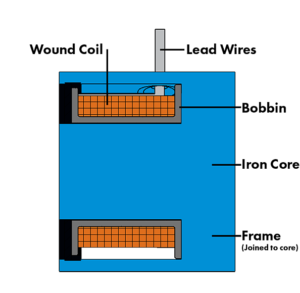
Electromagnet Diagram
And a Solenoid?
Our first Solenoid 101 blog, “What is a Solenoid?”, established the definition of a solenoid as “an electromagnetic device used to convert electrical energy into linear mechanical energy”. This is accomplished by use of a conductive wire which is wound around a bobbin, creating a coil. The bobbin has a shaft through the center that houses a ferrous plunger. The magnetic flux of the powered coil retracts the plunger, creating linear mechanical energy.
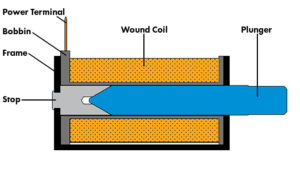
Solenoid Diagram
How is Each Used?
Electromagnets
An electromagnet is commonly used for holding an object in place. If the object being held is not ferrous, a ferrous contact surface can be attached to the object. The object being held is often referred to as an armature. Some common uses of Magnet-Schultz produced electromagnets are to hold doors, lock adjustable medical tables in position, or sort ferrous and non-ferrous material in a sifter.
Including a permanent magnet in the design of an electromagnet can give the unit the ability to hold without power supplied. When the electromagnet is energized, the electromagnetic force of the coil negates the force of the permanent magnet and the object is released. These are referred to as permanent magnet electromagnets. They conserve energy in cases where the electromagnet is expected to attract for a greater share of the time than it is expected to release.
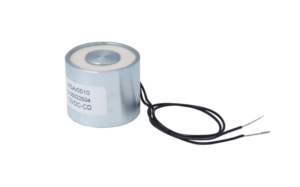
A common question about electromagnets is whether they can be used to repel. It can be done if the armature used is a carefully positioned permanent magnet, but it is impractical. There are more cost-effective and reliable solutions to create a linear “push” force. It is rare to see electromagnets used in this way.
Solenoids
Solenoids are used to create linear force over a stroke that is generally less than 2 inches. The force applied can be either a push or pull. Solenoids are highly versatile and some familiar uses are in electronic locks, vending machines, and many other types of industrial industrial equipment.
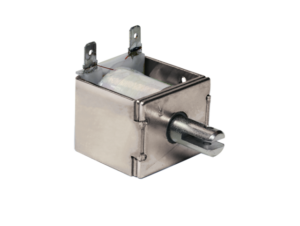
Simple modifications like a spring return allow a solenoid plunger to return to its original position after actuation. More complex designs with two coils can allow solenoids to function bi-directionally, or can utilize permanent magnets to accomplish latching functions. These modifications broaden the scope of solenoid usage, and the engineering expertise required to design these types of actuators is a Magnet-Schultz specialty. Keep an eye out for future blogs when we will explain other electromagnetic devices like voice coils and hydraulic actuators.
Magnet-Schultz of America specializes in custom engineering and manufacturing. Our engineers design with every performance aspect of the solenoid in mind. Function, size, longevity, power consumption, and cost are all considered. If you have any questions related to solenoid sourcing or manufacturing, please feel free to contact us. Browse past blogs for a more in-depth look at solenoid functions and subscribe to the notifications for future posts!



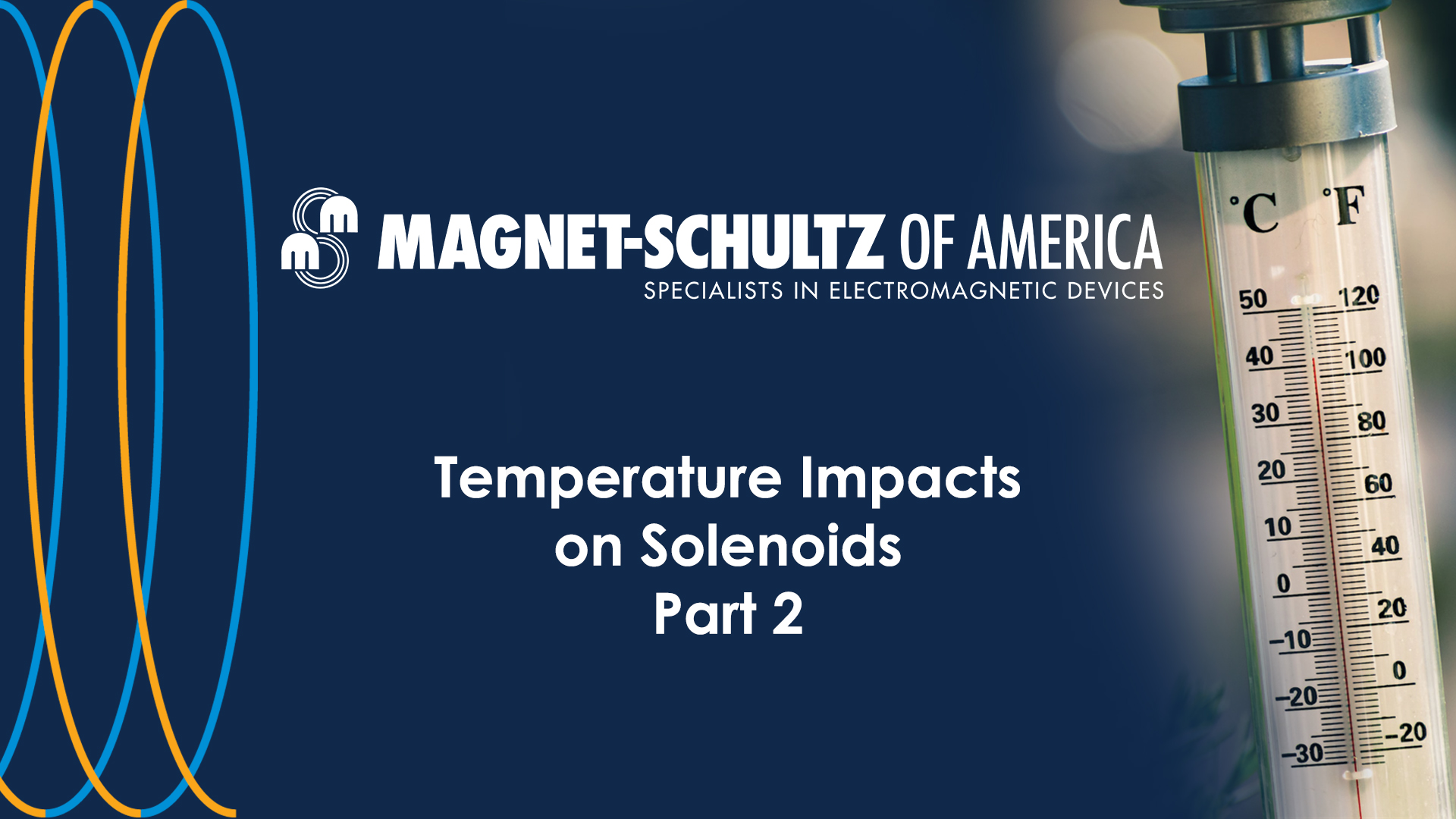

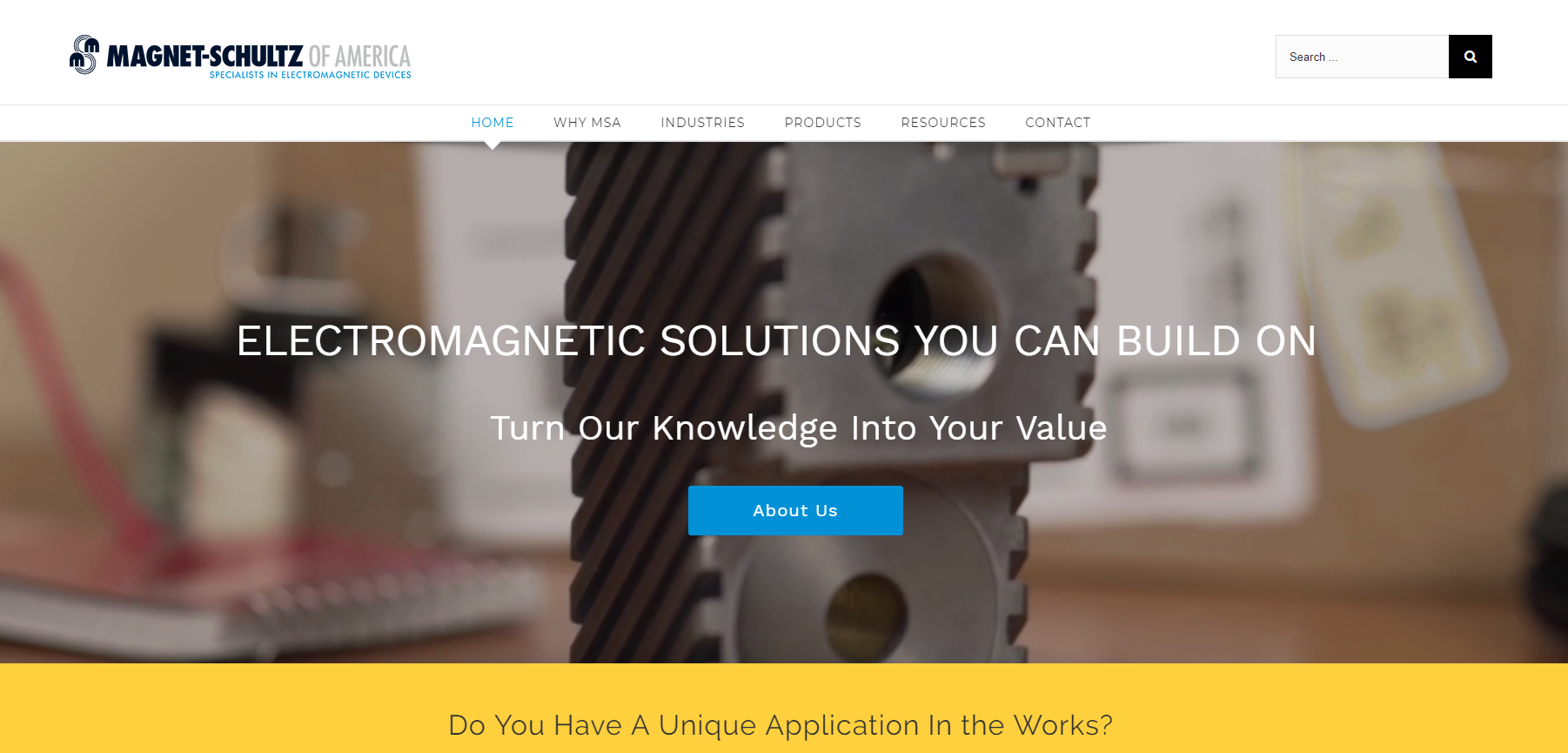

Leave A Comment